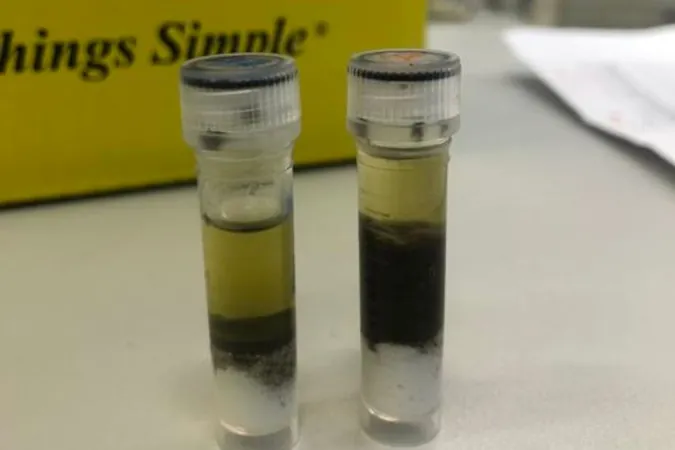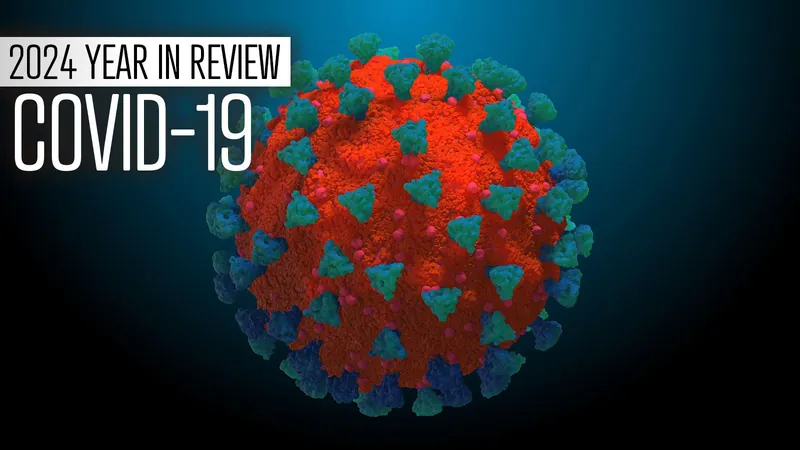
Hidden Threats: How Microplastics Shelter Dangerous Pathogens in Wastewater Treatment
2024-11-08
Author: Nur
Overview
A groundbreaking new study published in the open-access journal PLOS ONE reveals alarming findings about the dangers of microplastics in wastewater: they can serve as a refuge for human pathogens that survive traditional wastewater treatment processes.
The Challenge of Microplastics
While wastewater treatment plants are specifically designed to cleanse water of harmful contaminants, the persistent issue of microplastics presents a significant challenge. These tiny plastic particles can attract and support the growth of microbial biofilms, creating a complex ecosystem known as the 'plastisphere.' Previous research has hinted at troubling implications, as these biofilms may contain various potential pathogens that can threaten both human health and the environment when treated wastewater is discharged.
Research Findings
In a recent investigation led by Ingun Lund Witsø from the Norwegian University of Life Sciences, researchers focused on identifying food-borne pathogens residing in plastispheres on three different types of plastics found in wastewater. Utilizing advanced genetic techniques, the team cultured microorganisms and mapped the diversity of these microbial communities. Their findings were startling: they discovered key pathogenic bacteria and viruses including Listeria monocytogenes, Escherichia coli, norovirus, and adenovirus. Notably, they were able to cultivate Klebsiella pneumoniae and Acinetobacter spp. from both raw and treated wastewater, suggesting that the protective biofilms on microplastics shield these pathogens from elimination during the treatment process.
Implications for Public Health
These revelations underscore the dual threat posed by microplastics: not only do they persist in the environment, but they may also facilitate the spread of harmful pathogens. This raises serious concerns about the safety of reusing treated wastewater, as contaminated water could inadvertently reintroduce pathogens into the food chain. The researchers warn that without robust wastewater treatment capabilities and effective plastic waste management strategies, the dangers associated with wastewater could escalate significantly.
Conclusions and Call to Action
The authors conclude emphatically: 'The presence of microbial biofilms on plastics in wastewater treatment plants creates a potential reservoir for pathogens such as Listeria, E. coli, Klebsiella pneumoniae, and Acinetobacter spp. This research stresses the urgent need for innovative solutions to eliminate microplastics and their associated pathogens from wastewater systems.'
Future Directions
As experts continue to probe the hidden mysteries of wastewater treatment and microplastics, it is increasingly clear that safeguarding public health and the environment will demand an overhaul of current practices and technologies. The clock is ticking, and the stakes have never been higher!


 Brasil (PT)
Brasil (PT)
 Canada (EN)
Canada (EN)
 Chile (ES)
Chile (ES)
 España (ES)
España (ES)
 France (FR)
France (FR)
 Hong Kong (EN)
Hong Kong (EN)
 Italia (IT)
Italia (IT)
 日本 (JA)
日本 (JA)
 Magyarország (HU)
Magyarország (HU)
 Norge (NO)
Norge (NO)
 Polska (PL)
Polska (PL)
 Schweiz (DE)
Schweiz (DE)
 Singapore (EN)
Singapore (EN)
 Sverige (SV)
Sverige (SV)
 Suomi (FI)
Suomi (FI)
 Türkiye (TR)
Türkiye (TR)